Something that used to cost $100 per ton and took three weeks to transport only cost $10 per ton and took one week to ship. Raw materials and farm goods shipped East as manufactured goods such as iron stoves, shovels, nails and imported goods such as cotton fabrics shipped West. A host of other goods including flour, salt, wheat, and whiskey were also shipped. As frontier farmers gained access to eastern and global markets and had more efficient access to cheaper manufactured goods, the canal launched the consumer economy.
Home
Pre-canal Transportation
An Idea Becomes Reality
Financing
Construction
Economic Impact
Urban Growth
Today
Written Work
Economic Impact
The Erie Canal connected New York City and the East Coast with the Great Lakes, and was the first route to connect the Atlantic Ocean with Western waterways. The canal required 25,000 people to run during its peak years and employed workers as lockkeepers, drivers, and steersman. The canal operated 24 hours a day and delivered more people West in the 1830s and 1840s than any other land or water route. As it decreased transportation costs immensely and allowed more efficient trade, the canal drastically increased production and consumption.
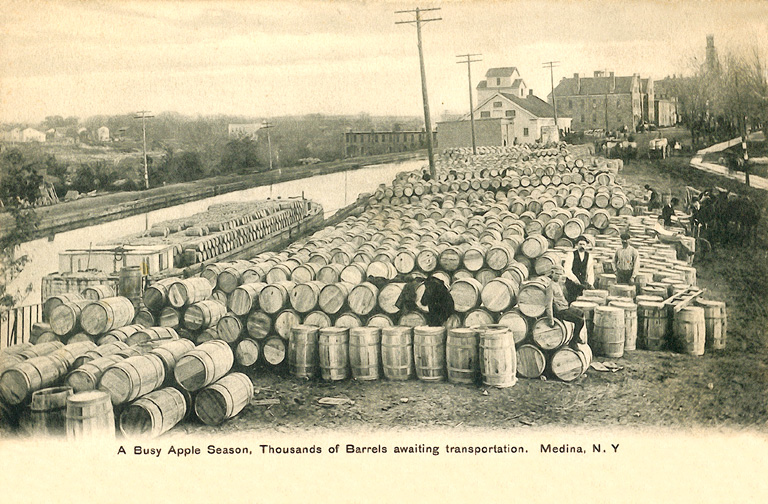
[The Erie Canal-eriecanal.org]
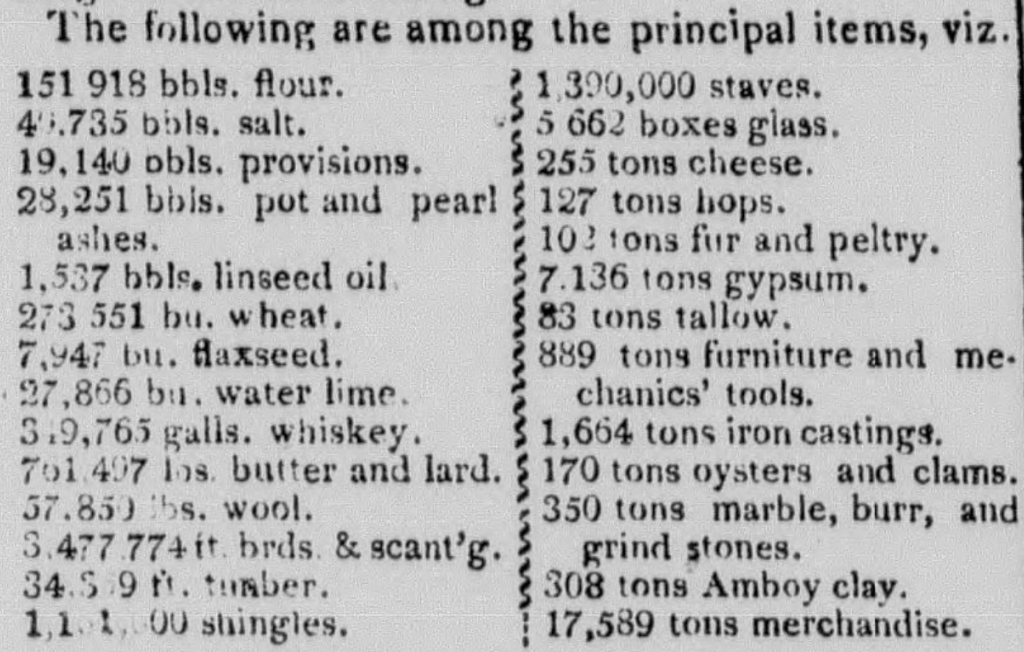
Principal items transported on the canal [American Watchman and Delaware Advertiser (1825)]
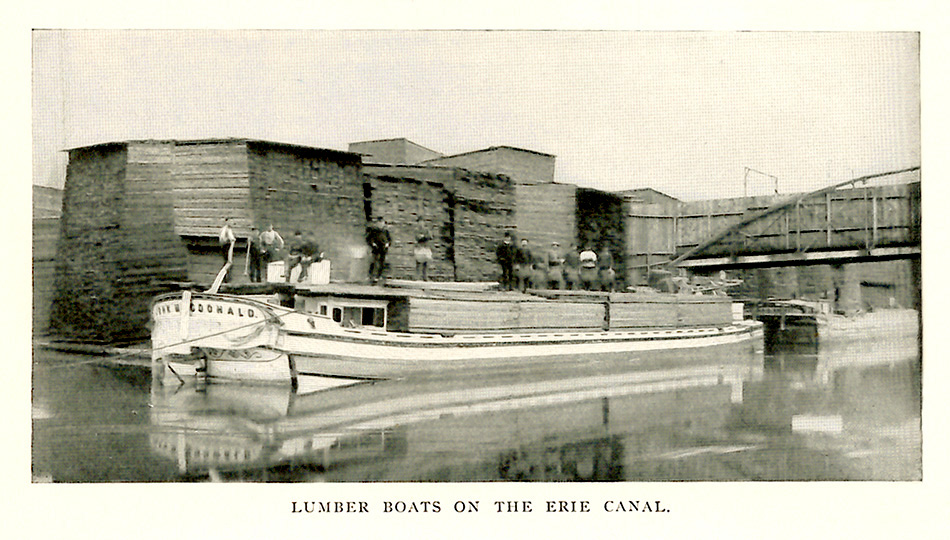
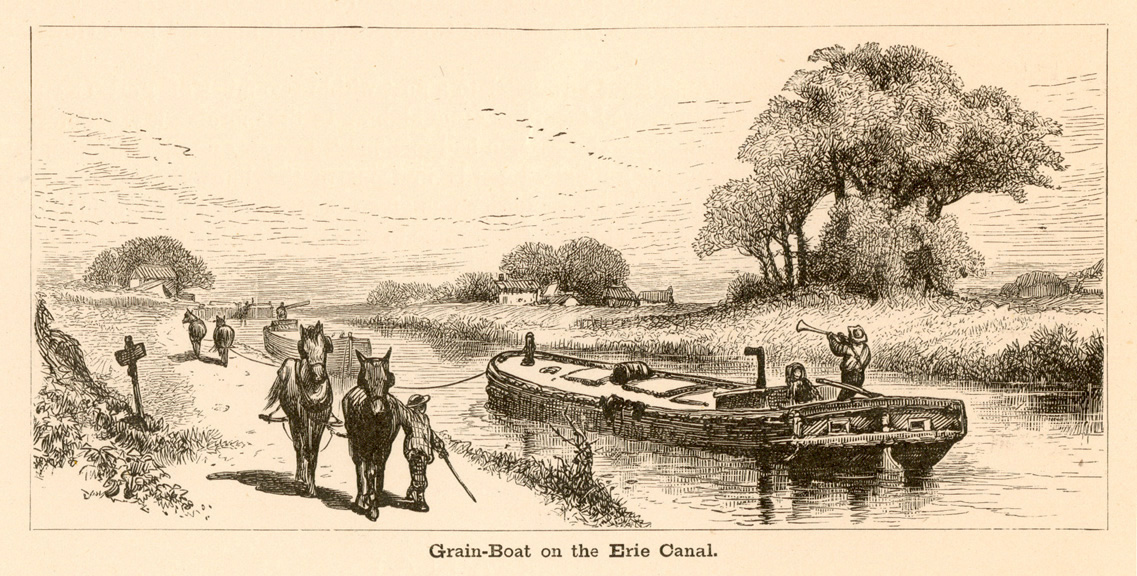
[The Erie Canal-eriecanal.org]
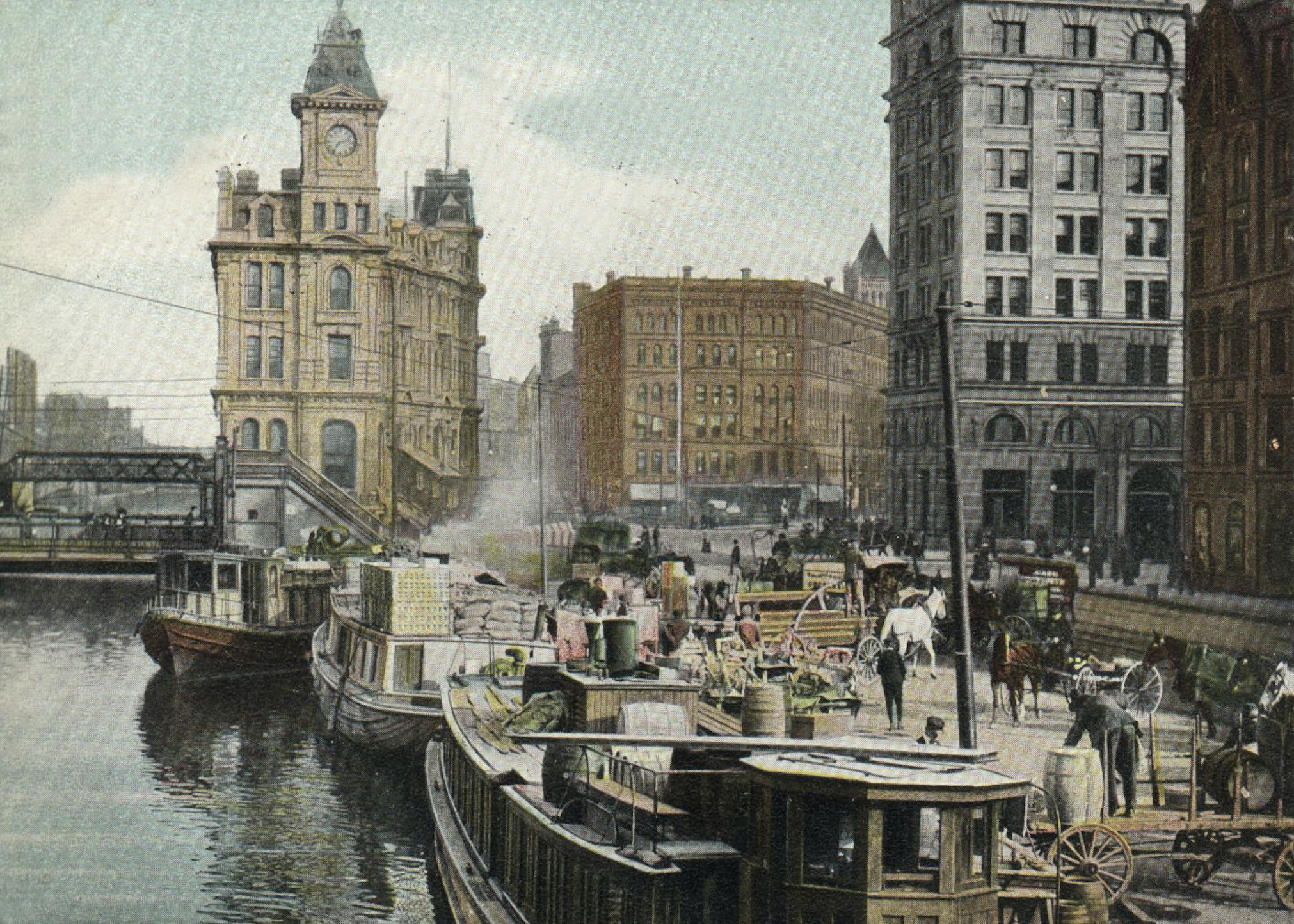
“Much of all this prosperity may be traced to the cheapness of conveyance on the Erie Canal”
-traveler Basil Hill, 1829
Packet Dock, Syracuse, N.Y. [The Erie Canal-Eriecanal.org]